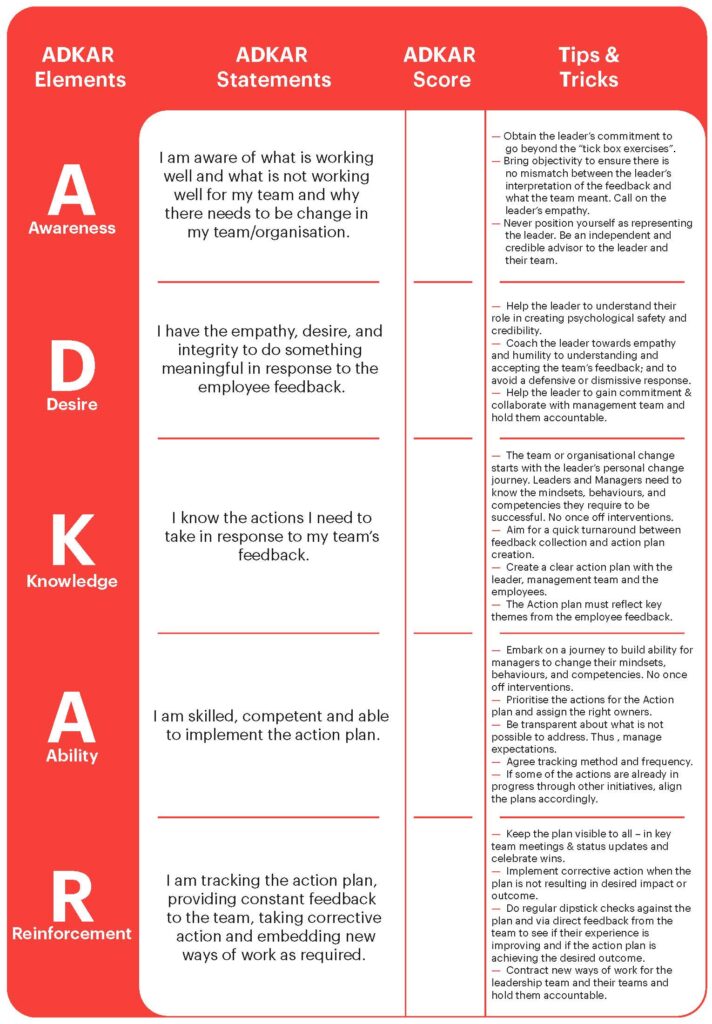Enhancing Employee Feedback Processes: My Top 4 Lessons for Effective Implementation and Impactful Results
The journey of collecting and utilising employee feedback is an ongoing process that demands continuous improvement and adaptability.

As managers and leaders, we understand the value of fostering a culture of open communication where employees feel heard and empowered to contribute their ideas. Throughout my own experiences and learnings, I have discovered invaluable lessons that have helped me refine the feedback loop, enabling me to create a more engaging and impactful environment for feedback. In this article, I will share my top four lessons learned, providing practical insights and actionable strategies to enhance your feedback processes and maximise its benefits for both individuals and the organisation as a whole.
Below, I summarise my top 4 lessons from my experience working with different leaders and their teams on planning and responding to employee feedback.
Let’s unpack each lesson.
Lesson 1: Assign credible persons to lead the feedback process

- The person leading the feedback process needs to be credible. Whether it’s a Change Management Practitioner, Human Resources partner, or Project Manager, they must uphold the right values –fairness, honesty, integrity, and professionalism.
- In the case of the leader and managers responsible for implementing the action plan, it’s key to address any trust deficit issues at the beginning and throughout the feedback process. I found this to be a significant barrier to the psychological safety of the leaders/management teams and employees.
- Leveraging leaders/managers who are already trusted by employees is also key in building employee buy-in.
Lesson 2: Follow a simple and efficient approach

I normally follow a simple approach and aim for quick wins and shorter turnaround times:
- Step 0: Secure early sponsorship/leadership alignment, coalition & enablement.
- Step 1: Positioning & set the scene for psychological safety
- Step 2: Design and implement the feedback and engagement process
- Step 3: Co-create an action plan, implement & track implementation
- Step 4: Integrate new ways of work & perform regular dipstick assessments
Lesson 3: The leader(s)’s readiness is a critical success factor. Support and coach as required

- Coach, advise, and support the leader towards a fruitful employee feedback process. Hold the mirror up for them and their management team.
- Most often than not, there would be changes that a leader and their management team may need to make in how they lead and manage the employees and the business overall. So, one of the most important changes will be the leadership team’s own change journey. This is notwithstanding changes to business processes, policies, and procedures, systems, ways of work, people management/ HR practices, etc.
- Think about it as the leader and/or their management teams’ ADKAR journey. Here is one way of using the ADKAR model to guide the required interventions and coaching conversations between the change management practitioner and the leadership team.
For example, their commitment can be articulated in line with Prosci’s ADKAR model and ideally, point to statements provided below:

*On a scale of 1 to 5, with 1 being the lowest and 5 being the highest. Scores of three or less suggest a barrier point and require action to improve the ADKAR score.
Lesson 4: Secure early sponsorship coalition & enablement

- The Leader/Sponsor and Management team should be aligned on the reasons for employee feedback and the leadership team’s implied change journey and shared responsibility to follow through with an impactful action plan.
- Build knowledge and ability for the leadership team to change their mindsets, behaviours, and competencies. No once-off interventions. For example, coaching and interventions to:
- build management competencies towards the required leadership style, team culture, and ways of work.
- build mindsets and behaviours that can build psychological safety and credibility.
- I found that the leadership alignment, team dynamics, and ability to make the change happen can be a real barrier to change. When the leader and management team succeed at making change happen, there is a greater chance of taking the rest of the team and the action plan in the same direction of success.

In conclusion, integrating effective employee feedback mechanisms into your organisational fabric is an investment that pays dividends in engagement, productivity, and overall satisfaction. By incorporating these four key lessons—setting clear objectives, establishing psychological safety, leveraging technology, and fostering a feedback culture—you can create a thriving feedback loop that propels your team forward and cultivates a culture of continuous growth and improvement. Remember, feedback is not a one-time event but a dynamic process that demands attention, refinement, and nurturing. Embrace these lessons, adapt them to your unique organisational context, and embark on a journey of empowered feedback, where the collective wisdom of your team leads to unparalleled success.